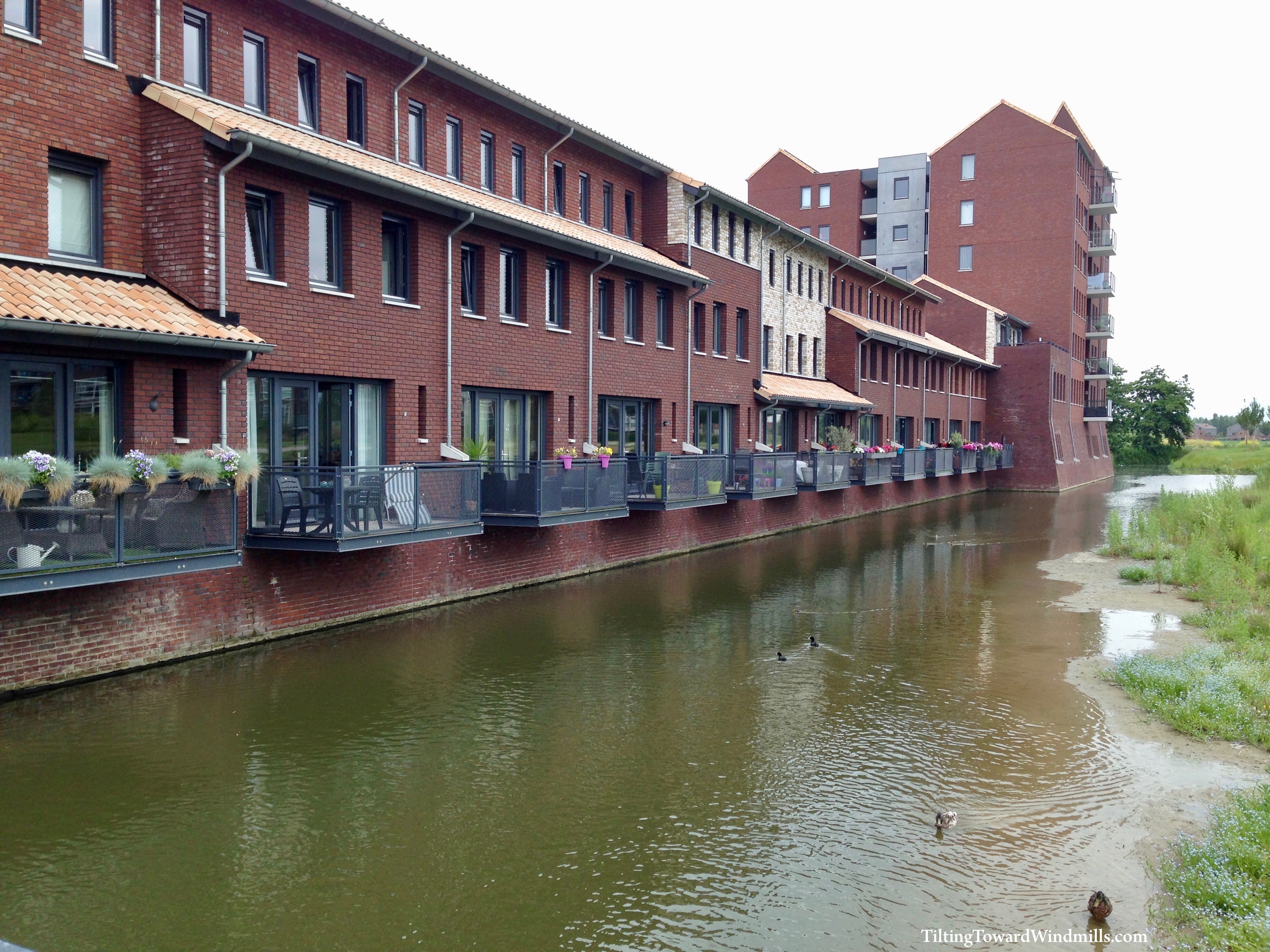The New York Times just published a fantastic article by Michael Kimmelman, The Dutch Have Solutions to Rising Seas. The World is Watching. This comprehensive treatise on Dutch efforts to hold back the sea is well worth a read.

I chuckled when I read that the writer included information about requiring Dutch children to earn swimming certifications while fully clothed. Although B. was already a decent swimmer when we arrived in the Netherlands, he was immediately put into training for his swimming certificate, which was offered at his school as part of his special needs school curriculum. He was ecstatic about the weekly swimming lessons part, but not at all happy about the swimming in wet clothes part. He has earned his B diploma, which is a broad endorsement of his teacher’s patience and persistence in wearing down B’s objections over a long period of time.
Learning to swim is serious business in a country surrounded by water. Children in Holland: the importance of swimming lessons provides details on what skills are taught:
As most accidental drownings occur after a person has fallen into a canal, the exam tests realistic scenarios. For children (and adults for that matter), it is vital for them to to be able to handle underwater disorientation while dealing with the additional weight burden of clothing. During swim lessons children are taught not to panic and to react in a calm, controlled manner to maintain a safe environment while in a water setting.
The certificate A program requires a child be able to swim 50 metres using both breast and back strokes, and swim 3 meters underwater through a large ‘escape’ hole in a canvas panel. The parameters increases to 75 meters and 6 meters under water for the B certificate. The C diploma requires 100 meters of surface swimming in swimsuit and clothing with additional obstacles, the forward roll, and finally 9 meters underwater.
Children who have not earned at least a diploma A are required to wear inflatable armbands in all public swimming pools until they have earned the required certificate. Most schools and children’s sports clubs in the Netherlands will not let children take part in water activities until they have achieved the A, B and C diplomas.
– Utexpat, Children in Holland: the Importance of Swimming Lessons, Angloinfo South Holland, July 5, 2014
According to Dutch Amsterdam, many accidental drownings are drunk tourists who fall into the canals and are unable to get out. A police spokesman comments in a typically direct Dutch fashion:
Every year police finds about ten ‘water cadavers’ in the canals.
Police usually do not have to take long to determine the cause. The drowning victims are sometimes found with their fly still undone.
“People who pee into the canals usually are not Amsterdam locals.”
Police spokesman Rob van der Veen is well-informed regarding the drowning cases. “Often the victims are intoxicated when they leave the warm pub and get out into the cold. When you then go and pee, your blood pressure drops, making you dizzy. That can easily result in a fall.
– Maarten van Dun, Waarom waarschuwt niemand? (Why does no one warn?), Het Parool, February 6, 2016
Finally, many thanks to Dutch Amsterdam for directing my attention to these two gems:
Swimming in Amsterdam:
Australian comedian, Steve Hughes’s observations on the lack of fences around Amsterdam canals:

Hi, a couple my friends several years ago where in Amsterdam and they made that same point. They were walking and there was a huge hole in the sidewalk. There were no signs and they’re like yeah common sense there’s a big hole don’t fall in it. Looking forward to reading more!
Hi Deborah,
This is very true. When we first arrived in the Netherlands, I was on my way to Ikea. I turned a corner and my right foot stepped into an 8 inch hole! Luckily it only took about a week for my ankle to heal. You also have to look out for basement stairwells that are just large gaps in the sidewalks. Thanks for reading the blog!